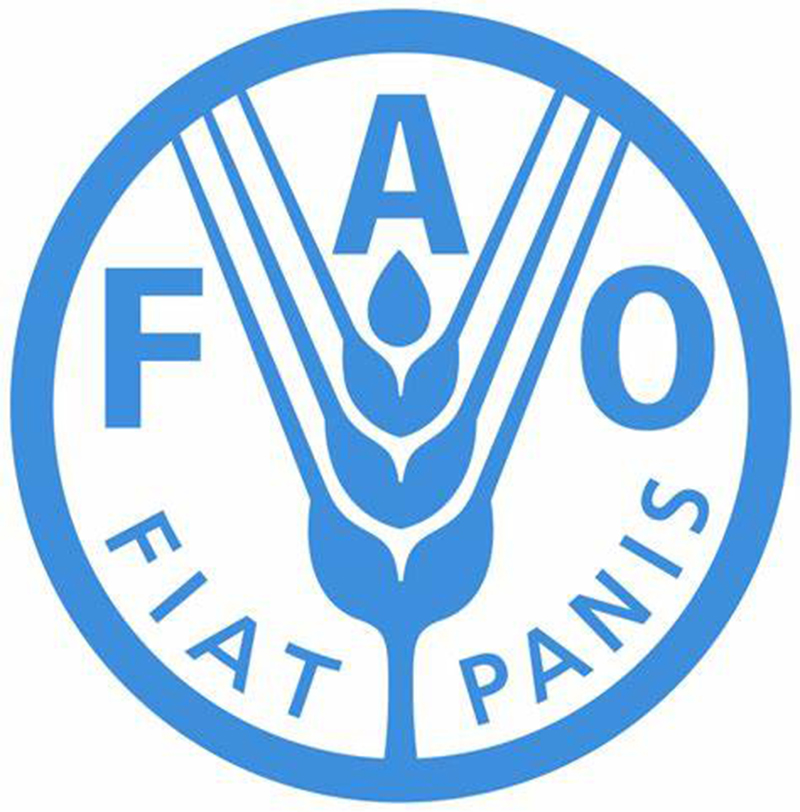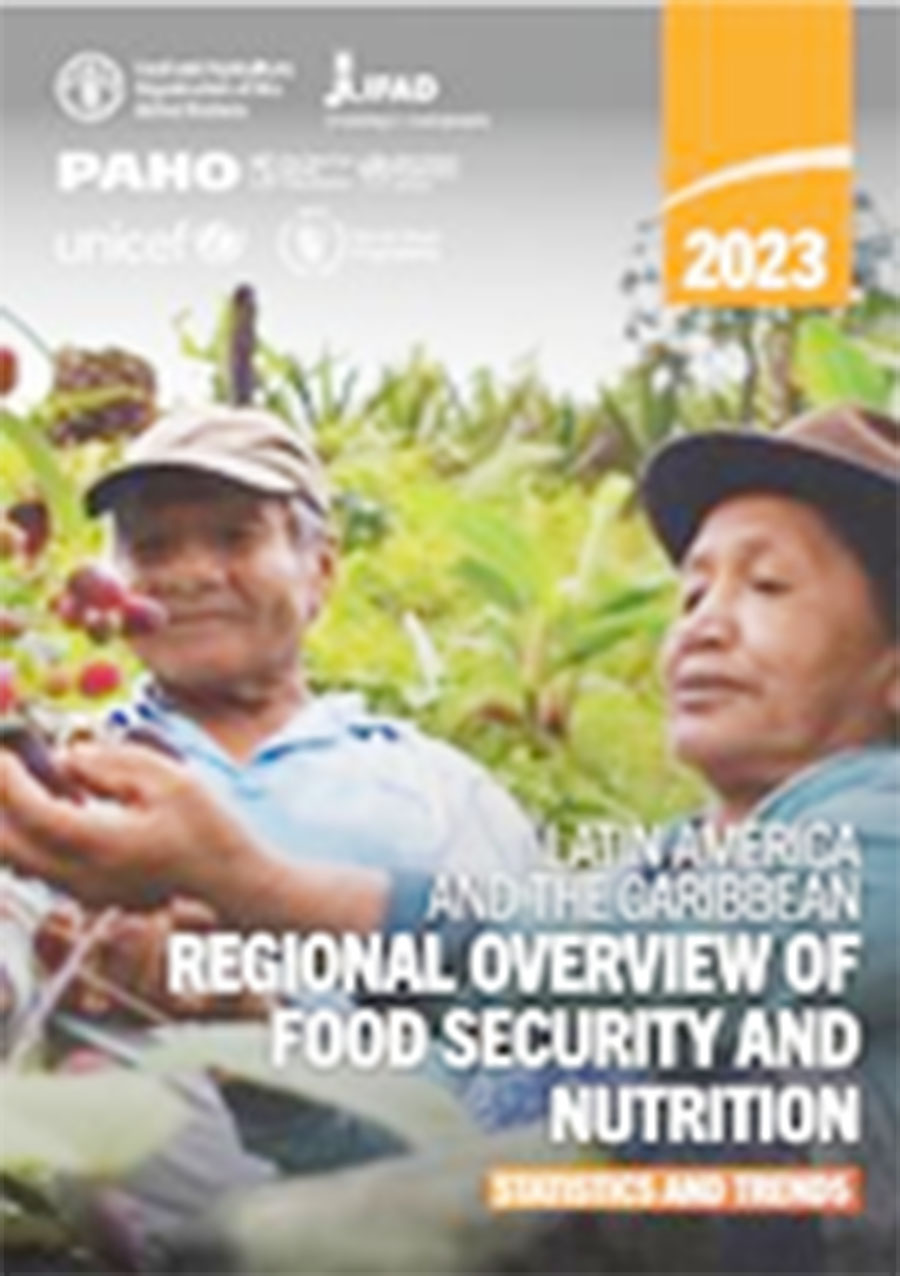Amidst the impacts of the COVID-19 pandemic, climate crisis, the conflict in Ukraine, an economic slowdown, rising food inflation and income inequality which have prevented hitting the targets established to meet SDG 2 of ending hunger, Guyana stands as a beacon of hope.
This was revealed in the 2023 Food and Agriculture Organization (FAO) report on the Regional Overview of Food Security and Nutrition in Latin America and the Caribbean, which highlighted Guyana as being one of the countries in South America with the lowest prevalence of undernourishment.
According to the report, in South America, the Plurinational State of Bolivia had the highest prevalence of hunger at 19.4%, followed by Venezuela with 17.9% and Ecuador 13.9%, representing 2.3 million, 5.1 million and 2.5 million people, respectively.
According to the report, among the countries with the lowest prevalence of undernourishment in the subregion, were Brazil with 4.7%, Argentina 3.2%, Chile 2.5%, and Guyana and Uruguay both below 2.5%.

It revealed that the impact of the COVID-19 pandemic, the climate crisis and the conflict in Ukraine, as well as the economic slowdown, rising food inflation and income inequality, have all impacted regional figures.
It said that while most recent data between 2021 and 2022 shows progress in reducing hunger and food insecurity in Latin America and the Caribbean, the progress achieved was still far from the targets established to meet SDG 2 of ending hunger.
Food insecurity, it said, continues to affect different groups of the population unequally, with women and residents of rural areas being the most vulnerable. Women, it noted, face greater food insecurity than men, and although the figure was reduced in 2022, the gap registered at the regional level is higher than the global estimate.
Additionally, rural and peri-urban populations experience a higher prevalence of moderate or severe food insecurity than those living in urban areas; while malnutrition in all its forms, including childhood stunting, micronutrient deficiencies, overweight and obesity, continues to be a challenge for the region.
Against this background, the report said that in the current context, it is imperative to move towards the transformation of agri-food systems in coordination with the strengthening of health and social protection systems, through comprehensive actions and systemic and multisectoral approaches.
It goes on to note that it is crucial to prioritize the development of sustainable value chains that promote nutrition, boost agri-food markets and trade, regulate food promotion and advertise, and encourage the development of healthy food environments.
Underscoring what it described to be a critical moment, halfway to the deadline to achieve the goals of the 2030 Agenda for Sustainable Development, the report posits that Latin America and the Caribbean must create the conditions to accelerate compliance with the targets of SDG 2 and the indicators established at the Second International Conference on Nutrition (ICN2).
In an analysis of its statistics and trends, the report disclosed that in the 2020–2022 triennium, compared to the 2017–2019 period prior to the pandemic, Venezuela showed a decrease in hunger of 4.8 percentage points, while in Guyana and Mexico the prevalence of hunger fell to below 2.5 percent.
By contrast, however, it highlighted that in the same period, hunger in the Plurinational State of Bolivia increased by 5.6 percentage points, while in Honduras and Haiti it rose by 4.6 and 2.8 percentage points, respectively. Regarding the issue of wasting which was also examined, the report revealed that in countries in the region such as Guyana, a prevalence above the targets had been recorded.
The report defined wasting as a form of malnutrition where a child’s weight is too low for their height. It said that it is the result of recent rapid weight loss or failure to gain weight; and is a life-threatening condition caused by insufficient intake or malabsorption of energy and nutrients, and/or frequent or prolonged illness.
According to the report, “A wasted child is at increased risk of death,” but noted the availability of treatment.
The report said that in 2022, the prevalence of wasting in Latin America and the Caribbean was 1.4%, which it said was significantly lower than the world estimate of 6.8%.
It then went on to point out that at a subregional level, the Caribbean had a slightly higher prevalence at 2.9%, followed by South America at 1.4 %, and finally Mesoamerica at 1 %.
It was keen to highlight that all subregions were below the world estimate.
The report stated that while all three subregions—the Caribbean, Mesoamerica and South America—and most countries were aiming to maintain wasting levels, there were some countries in the region still registering a prevalence above those targets.
On this point, the report said that Guyana in particular had the highest prevalence of 6.9%, followed by Suriname at 5.5 %, Ecuador and Haiti both at 3.7 %; and Jamaica and Brazil 3.2 and 3.1%, respectively.
Most countries the report, however, said were on track to reach the WHA 2025 and SDG 2030 targets, which aim to maintain wasting levels among children under 5 years of age, below 5 and 3, respectively.
The study also examined overweight and obesity among children under 5 years of age.
The report defined overweight and obesity as above normal body weight for height as a result of excessive fat accumulation.
It noted that in children under 5 years of age, overweight is defined as weight-for-height greater than two standard deviations above the median established by the WHO Child Growth Standards; while obesity is defined as a weight-for-height greater than three standard deviations above the median.
The report revealed that between 2020 and 2022, overweight among children under 5 years of age increased in Ecuador to 0.9 percentage point, Paraguay to 0.8 percentage point, Peru and Uruguay to 0.7 percentage point, and Argentina and Brazil 0.6 percentage point.
The report then went on to reveal that on the other hand, countries like Belize, Guyana and Jamaica showed a reduction in this indicator of between 0.3 and 0.4 percentage point.
According to the report, some of the countries with the highest prevalence of overweight among children in 2022 were Paraguay with 14.6%, Trinidad and Tobago with 13.9 %, Argentina-12.6%, Barbados 12.5%, Ecuador 11.9% and Uruguay 11.5%.
The FAO findings said, however, that although there are few countries in the region which have shown progress, there are some, among them Guyana, where the prevalence is below the world estimate.
It noted Haiti at 3.7%, Suriname at 3.8%, Honduras at 4.7%, Guatemala 4.8%; and Guyana and Jamaica, both at 5.7%.
The report said it is noteworthy that all three subregions were above the world estimate of 5.6%. While noting that none were on track to achieve the SDG target, it stated that persistent increases in this indicator have been observed since 2000 in both South America and the Caribbean.
The study also looked at anaemia among women aged 15 to 49, which revealed that among the countries in the region with a high prevalence of anaemia in women of reproductive age, were Haiti with 47.7%, followed by Guyana with 31.7% and the Dominican Republic with 26.4%.
It said that by contrast, the countries with the lowest levels were Chile, with 8.7% and Guatemala with 7.4%.
According to the report, all countries in the region, except Uruguay, reduced the prevalence of anaemia in women aged 15 to 49 years between 2000 and 2019; while noting that mong those countries, the most progress was achieved by Guatemala with a reduction of 67%.
For its part, Brazil, the report noted, achieved a reduction of 40%, while Colombia, Ecuador, Mexico, Peru, Saint Vincent and the Grenadines, and Trinidad and Tobago all reduced the prevalence of anaemia by more than 30%.
The report said that the capacity of Latin America and the Caribbean as a food-producing region “is, and will continue to be, an essential pillar on this path and for global food security.”
Against this background, it said, it is hoped that the report will be an important contribution to placing the eradication of hunger and the reduction of all forms of malnutrition at the centre of investments and public policies in the region.
“We will not be able to address inequalities in Latin America and the Caribbean, or move towards a more just region, without guaranteeing food security and nutrition. Let’s continue working together to leave no one behind,” the FAO report said.





